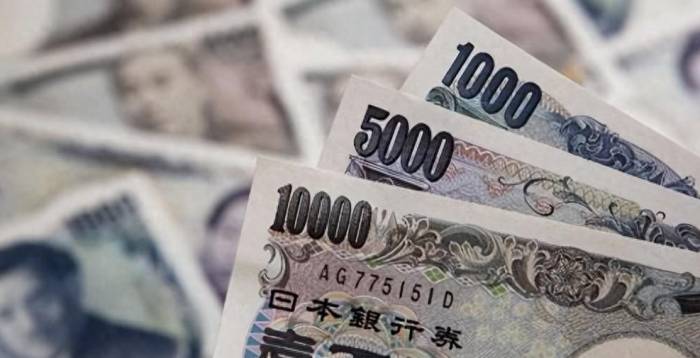-
Interest Rate Cut Cycle: Will Gold Hit New Highs?
-
Hong Kong Stocks Rebound with 6-Day Gain, New Issues Warm Up
-
Stocks Surge Nearly 150%!
-
EVE Lithium Energy: Lost $250B in 3 Years!
-
GDP Just 53% of India's? Growth Surpasses US!
-
Fed Cuts Rates, China & Japan Lead US Debt Sell-Off
-
Fed Announces 50 Basis Point Rate Cut
-
Deep Dive: US Rate Cut Fails, Hot War Looms
-
US, EU Exports Drop Over 10%
-
In-depth Analysis of Finance Jobs: Choosing the Right Direction Matters
Japan Gov't Bonds Crash, Asian Currencies at Risk!
Finally, the US dollar has made its move, unable to contain itself any longer.
With high interest rates persisting for so long, coupled with worsening fiscal deficits, interest payments, and expanding debt, the US is in urgent need of a financial harvest to quickly replenish the dollar's strength.
This time, the US has set its sights on Japan, which was expected, given the massive bubble in Japan's bond market.
The Japanese bond market, China's real estate market, and the US stock market are collectively known as the "three major bubbles" of the world.
Moreover, Japan lacks autonomy in many areas and essentially follows the US, so the US is targeting the soft spot, and this time it's Japan's turn.
However, Japan hasn't been able to hold out for long, and other Asian currencies are in danger, such as the South Korean won and the Thai baht, which are experiencing significant declines, reminiscent of the eve of the 1997 Asian financial crisis.
Will the US really succeed this time?
Why did the US target Japan?
Although Japan's GDP ranks fourth in the world, its debt ratio is the highest, with debt accounting for more than 250% of GDP, leading the world in debt ratio.
Advertisement
Since the US started raising interest rates in 2022, global funds have flowed back to the US.
To avoid a sharp devaluation of the yen, Japan sold over 200 billion in US bonds in 2022, continuously buying yen, but still failed to stop the currency's decline.
Japan's GDP fell sharply again in 2023, dropping to fourth in the world for the first time.
Currently, Japan is in an awkward position whether to raise interest rates or not.
If it raises rates, the nascent consumption and economic growth could be stifled, leading to a more sluggish economy.
If it doesn't raise rates, under the strong position of the US dollar, the yen will only fall more, and the Japanese economy will be aggressively shorted.
Recently, the Japanese yen exchange rate and Japanese bonds have been hit hard.
The yield on Japanese three-month government bonds has plummeted by 100%, and the yield on 40-year government bonds has fallen by nearly 10%.
The yen exchange rate has reached a new low in over 30 years, and Japanese bonds have faced the largest sell-off in more than 20 years.
It can be said that Japanese government bonds have "collapsed," with the huge bubble already burst.
The total amount of various Japanese bonds is as high as 1400 trillion yen, equivalent to 700 trillion RMB, comparable to the scale of our country's bond market.
However, it should be noted that Japan's GDP is only a quarter of ours.
With an economic scale less than a quarter of ours, but a bond scale on par with ours, it is evident that the bubble in Japan's bond market is enormous, a result of decades of accumulated massive debt.
Japan has not yet emerged from the 30 years of economic stagnation following the Plaza Accord, and now it is to be aggressively harvested by the US dollar.
The yen is being heavily sold by international capital, and the Japanese economy is being shorted and hunted, becoming a pawn in the hands of the US dollar.
The new round of financial warfare has begun, with the US dollar targeting the yen, and it's just the beginning.
In fact, it's not just the yen that has plummeted; even Asian currencies like the South Korean won, Indian rupee, Vietnamese dong, and Indonesian rupiah have seen significant devaluations under the strong counterattack of the US dollar.

As the US dollar has recently indicated that it may not cut interest rates and may even raise them, the dollar has rebounded sharply, reducing international capital's investment demand in emerging Asian markets, leading to significant devaluation pressure on Asian currencies.
Goldman Sachs in the US has boldly declared: Welcome the Asian devaluation wave!
Some media even believe that under the expectation of a strong US dollar, Asian currencies are in danger, and it is not ruled out that a crisis similar to the 1997 Asian financial crisis may be triggered.
Looking at the US's history, each time the dollar has harvested, it must burst one or several medium to large economies before it can successfully harvest and replenish the dollar.
However, this time it has not been realized for a long time, and this time the dollar suddenly changed its expectation of cutting interest rates at the beginning of the year to "possibly raising rates," indicating that the dollar is about to start a crazy harvest.
Although Asian countries are trying to maintain the stability of their currencies, the US wants to stir up the global financial market.
This time, it is targeting the entire Asian market, and its purpose is too obvious.
Therefore, in the next six months, the global financial market will only be more turbulent.
Your comment